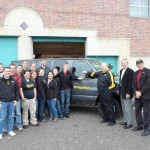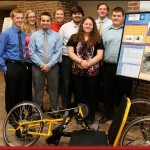 Michigan Tech observed Martin Luther King Week for 2013. with a “Dream Celebration” banquet in the Memorial Union Ballroom. The Keynote Address was made by Dr. Tricia Rose: “MLK History and the Legacies of the Civil Rights Era.” Dr. Gloria Melton presented the closing remarks.
Michigan Tech observed Martin Luther King Week for 2013. with a “Dream Celebration” banquet in the Memorial Union Ballroom. The Keynote Address was made by Dr. Tricia Rose: “MLK History and the Legacies of the Civil Rights Era.” Dr. Gloria Melton presented the closing remarks.
Read more Details and view photos of “Michigan Tech Martin Luther King Week”


